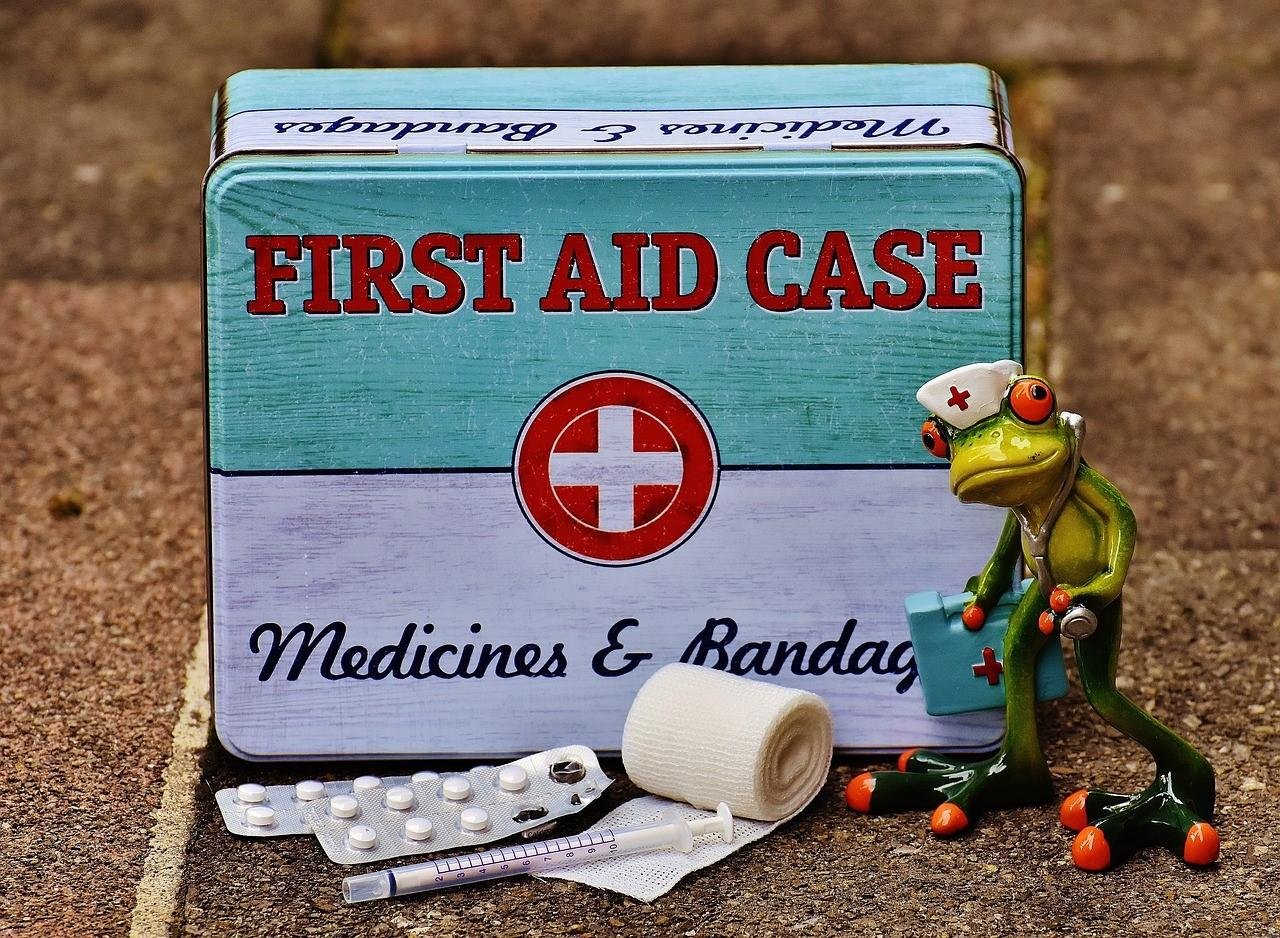Travel First Aid Kit
Among all the things we should include in our luggage, one should not be missed: the travel first aid kit.
Do you want to know why it is so necessary? Keep reading ?

Carrying a first aid kit is often overlooked by many people, as they consider it a secondary item. They would instead use the space in their suitcase for other objects or clothing.
But we should remember that we are talking about our well-being, which should be the priority.
It’s better to have it and not need it than to need it and not have it.
Reasons to Carry a First Aid Kit on Your Travels

If you are still not convinced about packing a first aid kit, here are some reasons to consider doing so:
- Unforeseen incidents like cold, injury, or food poisoning can occur anytime, anywhere. And it is better to catch problems early on to prevent them from ruining your holiday.
- Accessing essential products or medicines could be challenging in some countries or remote places. Carrying them from home can significantly improve your travel experience.
- Peace of mind from knowing that, in the event of an injury or physical damage, we can get through it. Better safe than sorry.
- If you’re travelling with others, bringing a first aid kit can enable you to assist them, too.
How to Prepare a Good Travel Kit

The first aid kit should be tailored to the destination, mode of transportation, and the traveller’s health condition. However, I recommend including the following items:
- *️⃣ Sterile gauze, elastic fixation bandages, plasters and surgical tape.
- *️⃣ Antiseptics and disinfectants. Antiseptic wipes can get you out of trouble if you cannot carry alcohol or hydrogen peroxide and take up very little space.
- *️⃣ Disposable gloves.
- *️⃣ Scissors.
- *️⃣ Clinical thermometer.
- *️⃣ Tweezers.
- *️⃣ Painkillers like paracetamol, ibuprofen, or aspirin can be used for pain relief, minor injuries, fever, and inflammation.
- *️⃣ Stomach protector or antacids to prevent the negative effects of the ‘new’ gastronomy.
- *️⃣ Antidiarrhoeal: It’s better to have it and not need it than to need it and not have it.
- *️⃣ Laxative to solve stomach problems.
- *️⃣ Oral rehydration solution. It will help to replenish the fluids and electrolytes that have been lost and aid in rehydration after vomiting or diarrhoea (ORS).
- *️⃣ Medication for motion sickness, such as tablets, gum, or suppositories (antikinetic drugs).
- *️⃣ Antihistamines for allergic reactions.
- *️⃣ Emergency antibiotics, such as amoxicillin, should be used only when strictly necessary. Make sure to take the prescription with you.
- *️⃣ Mosquito repellent: It is essential in hot or tropical countries. Make sure it contains DEET (diethyl-meta-toluamide) with a concentration greater than 25%, especially if you are visiting a country with dengue fever.
- *️⃣ Ointment for bites.
- *️⃣ Sunscreen adapted to your skin type.
- *️⃣ It may be necessary to bring specific medication, such as malaria tablets, depending on your destination. Ask your pharmacist.
- *️⃣ Hand sanitiser.
- *️⃣ Your medication for personal use, such as:
- Asthma inhaler
- Insulin injections
- Tablets for chronic diseases such as hypertension, hypothyroidism, etc.
Other items (less important but also necessary)
- *️⃣ Eye drops. In case your eyes are easily irritated.
- *️⃣ Earplugs.
- *️⃣ If you plan to visit remote areas surrounded by nature, it is a good idea to carry water purification tablets to avoid dehydration.
Additional Recommendations

Here are some other recommendations related to health and the travel first aid kit:
✳️. If you have limited space, prioritise the items that will be most difficult to get at your destination.
✳️. If you require medication for a specific disease:
- Always carry it in your hand luggage to avoid loss.
- It’s recommended to bring a note from your doctor explaining the need for these medications.
- Always carry something more than necessary.
- If you require any unusual medication, check with the airline, as some countries have restrictions.
✳️. Make sure you do not take expired or damaged products.
✳️. It is better to always carry them in their original packaging, or at least also take the leaflet.
✳️. It’s always useful to have written information about the hospitals and health centres near your destination, including their phone numbers and addresses.
✳️. Don’t forget to check the health situation in the country you plan to visit before embarking on your travel.
Please note that carrying a travel first aid kit for minor emergencies is not a substitute for travel insurance. While a first aid kit can be helpful, travel insurance is necessary to cover more severe cases that require medical attention. They are not mutually exclusive!
If you want to know more about everything you should consider when buying your travel insurance, I recommend reading my article How to Choose Your Travel Insurance.
Contact Form
I hope you liked this post and found it helpful.
If you have any questions or concerns, please don’t hesitate to contact me. You can leave a comment below or fill out the contact form, and I’ll gladly assist you. 😊
Now that you know how to prepare the travel first aid kit, you can return to the Travel Logistics page to continue preparing for your trip.





